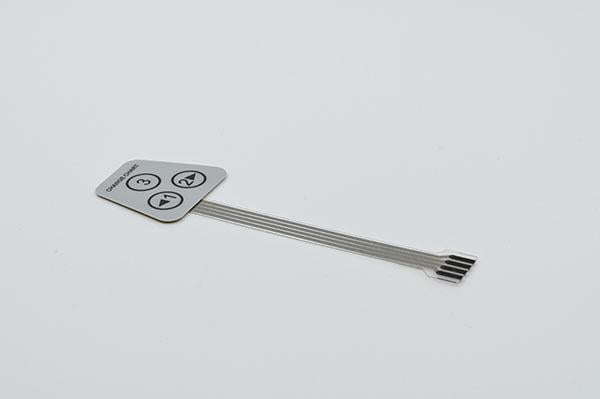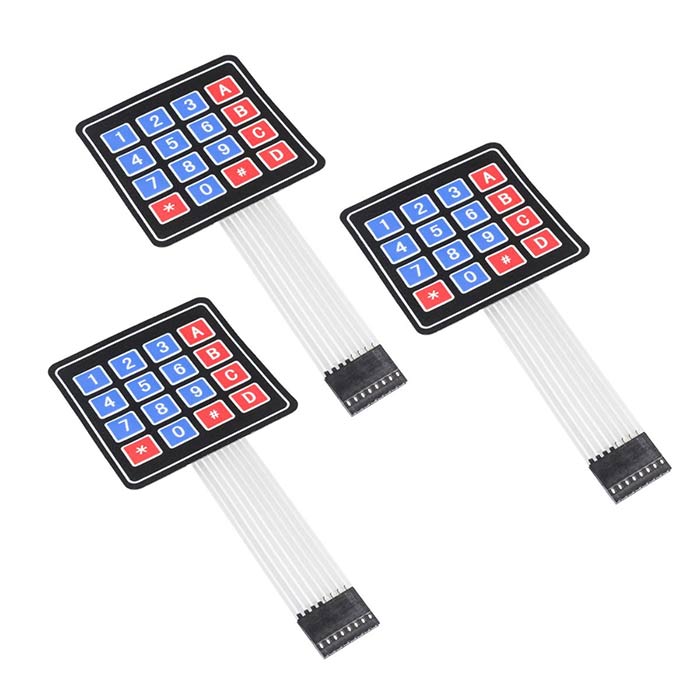Projects requiring high standards should always involve a experienced membrane switch manufacturer from the start.
All Regarding Membrane Switch: Recognizing Its Style and Capability
When you think of the control interfaces in modern-day devices, membrane layer buttons usually enter your mind. These parts are a lot more than just switches; they mix layout and performance seamlessly. Understanding how they work and what makes them reliable can alter your point of view on daily electronics. There are nuances to their layout and efficiency that you might not be mindful of. Allow's explore what collections membrane layer switches over in addition to various other control systems.
What Are Membrane Layer Switches?

Their seamless nature makes them simple to tidy and immune to dust and moisture, an important feature in lots of settings. Membrane layer buttons can also be personalized pertaining to form, dimension, and graphics, enabling manufacturers to produce special user interfaces customized to specific products. And also, they're lightweight and thin, which aids in minimizing the general bulk of gadgets. On the whole, membrane buttons play a substantial function in improving user experience across a broad range of applications.
Exactly How Membrane Layer Switches Over Job
When you press a trick on a membrane button, it triggers a straightforward yet effective system. The leading layer, often made from adaptable material, lowers onto a conductive layer beneath it. This action bridges the void in between conductive traces, finishing an electric circuit. As quickly as the circuit closes, it sends a signal to the gadget's controller, which analyzes your input.
You'll discover that the tactile comments differs based upon the button style, providing either a soft click or an extra noticable response. When you release the key, the membrane returns to its original position, resuming the circuit and stopping the signal. This procedure happens almost immediately, guaranteeing a receptive user experience.
Membrane layer buttons are prominent due to their longevity and resistance to dust and moisture, making them suitable for different applications, from house devices to medical devices. Comprehending this procedure helps you appreciate their prevalent usage.
Trick Parts of Membrane Layer Switches
Comprehending the essential elements of membrane switches is basic for understanding their capability and design. The protective layer shields against environmental elements and put on, extending the button's life-span. By comprehending these parts, you'll gain understanding right into exactly how membrane layer switches run and their value in various applications.
Materials Utilized in Membrane Switch Over Layout
The efficiency and sturdiness of membrane switches over greatly depend on the materials made use of in their design. You generally come across polyester and polycarbonate as main substrates as a result of their superb strength and versatility. These products withstand scratches and chemicals, making them excellent for requiring environments.
The conductive layers typically use silver or carbon, picked for their integrity and conductivity. membrane switch manufacturer. Silver offers exceptional efficiency, while carbon is a cost-efficient alternative. For the overlay, you may think about a matte or glossy coating, depending upon your aesthetic needs and user experience
Adhesives play an essential role too; they bond layers securely and guarantee longevity. Make sure to select adhesives that withstand ecological variables like temperature level and moisture. Do not forget the relevance of an excellent printing method for graphics, as it enhances both functionality and visual appeal. Choosing the ideal materials will assure your membrane switch stands the examination of time.
Layout Factors To Consider for Membrane Switches
While making membrane switches, it's vital to take right into account numerous factors that influence their performance and customer experience. Beginning by concentrating on the design and button dimension; ensure they're user-friendly and simple to browse. Think about the tactile comments you intend to supply-- will customers need a noticeable click or a softer touch? Furthermore, consider the materials you'll make use of, as they'll affect durability and appearances.
Confirm your layout fits environmental elements, like moisture or temperature variants, which can impact performance. By thoroughly considering these elements, you'll develop a membrane layer switch that enhances use and fulfillment.
Applications of Membrane Switches
Membrane layer buttons are functional elements found in various applications, from commercial devices to consumer electronic devices. You'll see their effect in machines that call for long lasting interfaces and in tools that gain from sleek designs. Comprehending these applications aids you value the functionality and usefulness of membrane buttons in daily technology.
Industrial Tools Use
When you're aiming to boost the functionality of commercial tools, membrane layer buttons offer a reputable solution that incorporates toughness with user-friendly design. These buttons are perfect for rough settings, providing resistance to dust, dampness, and chemicals. You'll discover them in control panels for manufacturing makers, a/c systems, and medical devices, where precision and responsiveness are important. Their reduced profile indicates they fit effortlessly right into different tools, saving beneficial space while preserving convenience of use. With adjustable graphics and backlighting alternatives, you can create an instinctive user interface for operators, improving performance and safety. Plus, their lengthy life-span reduces maintenance expenses, making them a clever investment for your industrial applications. Accept membrane layer buttons to streamline your operations and enhance general efficiency.
Consumer Electronics Integration
In the domain of consumer electronic devices, membrane switches play a crucial role in boosting user communication and device performance. You'll locate them in gadgets like microwaves, remotes, and gaming consoles, providing a seamless way to connect with modern technology. Their streamlined layout enables simple combination into various items, making controls instinctive and user-friendly. With their capacity to include graphics and backlighting, you can enjoy a contemporary visual that complements the device's total look. Membrane switches likewise assure resilience and resistance to dirt and wetness, prolonging the life-span of visit this website your electronic devices. By choosing membrane layer switches, you enhance not simply the functionality yet additionally the style of your tools, making daily interactions smooth and delightful.
Advantages and Downsides of Membrane Buttons
While membrane switches supply a variety of advantages, they likewise feature some disadvantages that you need to take into consideration. One substantial benefit is their small style, making them perfect for space-constrained applications. They're additionally cost-efficient, supplying a durable service with a reduced manufacturing cost. Furthermore, their smooth surface area is easy to clean, boosting hygiene in atmospheres like healthcare facilities.

Membrane layer buttons can have a shorter lifespan compared to mechanical switches, specifically under hefty usage. They can likewise be less responsive, which might influence individual feedback throughout procedure. Balancing these pros and disadvantages will aid you figure out if membrane buttons are the ideal fit for your job.
Often Asked Questions
The Length Of Time Do Membrane Layer Switches Typically Last?
Membrane layer switches generally last between read this 5 to one decade, relying on use and ecological conditions. You'll intend to assess variables like wear, direct exposure to Read Full Article dampness, and temperature level fluctuations to evaluate their long life efficiently.
Can Membrane Layer Switches Be Customized for Specific Layouts?
Yes, you can personalize membrane layer buttons to fit details layouts (membrane switch manufacturer). You'll have the flexibility to select colors, forms, and formats that match your task's demands, guaranteeing they mix perfectly with your total aesthetic
What Is the Expense Array for Membrane Switch Over Production?
The price range for membrane button manufacturing usually drops in between $1 and $10 per system, depending upon factors like layout complexity, quantity, and products. You can get quotes from manufacturers to locate the very best choice.

Are Membrane Switches Over Waterproof or Resistant?
Membrane layer buttons can be designed to be water resistant or immune, relying on materials used and building and construction techniques. If you need them for damp environments, assure you specify those requirements throughout the design procedure.
How Do Membrane Changes Contrast to Typical Buttons?
Membrane layer switches are typically thinner and much more versatile than standard buttons, supplying a smooth layout. They're often less complicated to clean up and integrate, but could not supply the responsive responses you're used to with mechanical choices.
Conclusion
